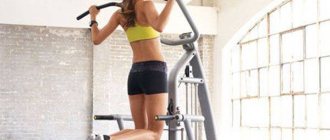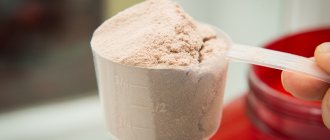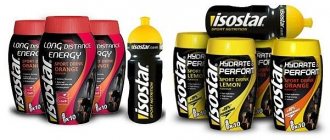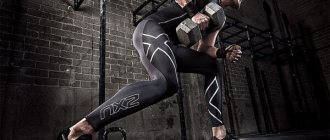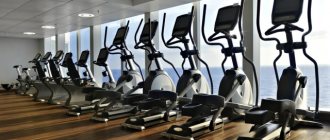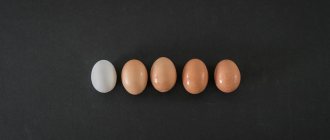27.06.2020
573
9352
8284
Save
We tell you what a foam roller is, what benefits it brings, what models there are and how to use it correctly.
We tell you what a foam roller is, what benefits it brings, what models there are and how to use it correctly.
What is self-myofascial muscle release?
To understand how a foam roller works, we first need to explain the concept of self-myofascial release (SMR). This is a technique developed by Mark F. Barnes and aimed at reducing the impact of barriers between layers of fascial tissue. It is the hard connective tissue that surrounds and connects muscles, organs, bones, tendons, ligaments and other structures of the body. Its role is very important for the human body because it holds our muscles in place and that is why we can move.
Poor exercise habits, muscle tension caused by stress, limited movement, various injuries, or dehydration can cause tissue to form in the connective muscle that will limit the proper ability to perform muscle function. Healthy fascial tissue is maintained by movement and fluid intake.
If during our life we have overcome an injury or acquired incorrect movement habits , the fascial tissue will contract. This manifests itself externally, for example, as muscle contraction and hardening or pain. If we have “glued” fascia in a certain location, the muscles and joints have less range of motion and cannot move properly, which causes insufficient blood flow. This is when foam roller exercises can help you.
The self-myofascial release (SMRF) technique is becoming an increasingly common technique in the treatment of soft tissue. While in the past it was used only by certain groups of professional athletes, coaches and therapists, today it is already well known to the majority of the population. This is mainly due to new information and research available, as well as the affordability of foam rollers.
The difference between SMR (self-myofascial release) and myofascial release is that in SMR you use your body weight to massage , while in a classic massage your muscles are massaged by the massage therapist using pressure from the hands and fingers.
Mistake #2: Moving too fast
While it's fun and healthy to do quick back-and-forth movements on a foam roller, it's unlikely to help you eliminate muscle problems. “You need to give your brain time to signal your muscles to relax,” writes Monica Vasquez, a certified personal trainer and runner coach in the United States.
Solution : Move more slowly so that the surface tissues and muscles have time to adapt and can respond to the pressure. Identify the pain points and move with short, slow movements over these points.
What are the benefits of exercise with a massage roller?
Training with a massage roller has a very good effect on our flexibility. In addition, it improves blood and oxygen flow, improves performance, relieves muscle tension and reduces stress. At the same time, it can help eliminate cellulite because it restores tissue elasticity. A study published in the Journal of Strength and Conditioning Research shows that myofascial release using a foam roller can significantly increase range of motion without any negative effects.
If you do high-repetition movements such as running , you tend to overwork some muscles , which can become fatigued over time. Muscles that are overused tend to become tense, which subsequently causes them to malfunction. With the help of a foam roller, you can release those tight muscles and knots in the fascia so that your body can function normally again.
Contraindications
Despite its benefits, there are a number of limitations to using a massage roller. So, the contraindications are:
- increased body temperature, whether due to a respiratory infection or pathology of a specific organ;
- any neck and back injuries;
- diseases of the spine, including vertebral displacement, hernia, etc.
- dermatitis, disruption of tissue trophism at the site of massage, psoriasis, skin rashes;
- varicose veins;
- some diseases of the nervous system (epilepsy, mental disorders, etc.)
- tuberculosis;
- severe pathologies of the heart, kidneys, lungs and other organs;
- oncological diseases.
When planning exercise, consult your doctor. After all, for example, even slight dizziness, changes in blood pressure, arrhythmia, pain may be the result of a disease in which the use of a massage roller is contraindicated.
How to properly and effectively train with a massage roller?
The method of using a massage roller during training is quite simple. Select the body part you want to massage and lie on top of the cylinder so you can control the pressure with your body.
Stretch down and up slowly to find areas that have been contracted and hardened. Work the hardened area for a few seconds and then continue. Do the entire exercise slowly, otherwise it may cause too much damage and you will end up with bruises. By moving slowly, you give your muscles time to adapt and relax under pressure.
The massage roller will apply pressure to the painful area, but you will feel good about it. However, if you notice that you are experiencing pain that you are uncomfortable with, shift your weight to create a pressure that is comfortable for you. The most important thing you must remember is that you should always listen to your body. You should feel pain, but pain that is bearable and relaxing. Do not use the massage roller on your joints. Perform exercises only in areas where there are muscles. The massage roller does not affect the joints, and you only create unnecessary pressure in the area that is most stressed during exercise.
Mistake #1: Using a rollerball right where you feel pain
When a person feels pain, the first thing that comes to mind is to start massaging the sore spot. However, this can be a very big mistake. “A sore area is caused by unequal muscle tension in different parts of the body,” says Sue Hitzmann, chiropractor, MS, creator and author of The MELT Method.
Let's look at the iliotibial tract as an example. Foam roller is very often prescribed for the treatment of iliotibial tract syndrome. Although using a massager to treat the iliotibial tract may make the patient feel better, "it is wrong to think that using it will relax the iliotibial tract," says Hitzmann.
The phrase “massage the iliotibial tract” itself sounds like you have a piece of soft tissue at your disposal, but in truth, the iliotibial tract is not that pliable. This is a very dense section of connective tissue, and according to research, it cannot be loosened and repaired using manual techniques and tools such as foam rollers. “If you heat the inflamed area, you can only increase the area and degree of inflammation. If you're in pain, your body will be too stressed to fix the problem on its own,” says Hitzmann.
Massage of the iliotibial tract using a foam roller.
Solution to the problem : Avoid direct influence, use indirect influence. If you find a sensitive point, you can use it as a key by moving the impact to the side a few centimeters. Spend more time working on specific areas around the painful area, then move on to broader movements, Hitzmann suggests. For the iliotibial tract, you need to work on the major muscles that attach to the tract, especially the gluteus maximus (the largest muscle in the buttocks) and the fascia lata (the muscle that is on the outside of the thigh).
Beware of lower back exercises!
According to the National Academy of Sports Medicine, you should avoid lower back exercises. Typically, pain in this part of the spine is caused by mechanical strain. The diameter of a typical roller is approximately 12 cm, and most exercisers cannot properly control the position of their lower back on the roller. If a person tenses all his muscles and moves quickly on a roller, one cannot expect the desired relaxation. If lower back pain is caused by non-mechanical factors, then the pressure from the massage roller on the spine can worsen the condition.
Additionally, the areas where you want to use the foam roller should protect the bones. For example, when performing chest exercises because the ribs provide protection. The lower back contains the kidneys and liver, which have no protection. They may be protected by muscles, but are still considered areas that may be at risk, especially when using body weight over a large object such as a foam roller. Consider a smaller massage device, which may be more effective and, in this case, safer.
Mistake #4: Incorrect posture when working with a foam roller
“You have to be in a certain position when using the foam roller,” says Howard, “and it requires a certain amount of strength.” “When massaging the iliotibial tract, you need to lean on one hand, transferring the weight of the upper body to it.” When massaging the quadriceps muscle, you need to take a position similar to the position when doing a plank. If you don't pay attention to your posture, you can end up with a lot of problems rather than benefits.
Solution : Work with a professional trainer, physical therapist or coach who has the right knowledge. Or you can use your smartphone camera to film yourself working with the foam roller, and later watch the video and understand your mistakes or show it to a specialist.
Favorite exercises with a massage roller
It is important to understand that no foam roller exercise should be painful, because if it is, your muscles will begin to contract and will not relax. At first, you may feel a little uncomfortable, but you should not feel severe or unpleasant pain.
Exercises on a massage roller can be divided based on the part of the body in which they are performed - exercises for the legs, arms, back, buttocks and chest. There are two basic techniques that you can use on any part of the body.
The most commonly used is “classical massage” - you slowly and smoothly move along the roller from the lower part of the limb to the upper. You can decrease or increase the pressure on the areas being massaged using your own weight.
The second option is to rub the sides of the calf from right to left. This exercise gives the muscles a different direction to relax.
Types of rolls
Soft foam roller
Soft foam roller
Hard rubber roller with a dense base
Hard rubber roller with a dense base
Both options can be hollow inside or filled with material.
This is the type of roller that best copes with scoliosis, problems with posture, and tight back muscles. You can use it to relax tight muscles in the legs, thighs or buttocks, but if you are not used to it, it can be quite painful.
Rigid roller
A roller with a rigid base copes best with scoliosis, problems with posture, and tight back muscles.
The best exercises with a massage roller by body part
Caviar
Sit on the ground with your legs extended and place the foam roller under your calves. To maintain balance, lean on your hands. Slowly “massage” your calves from your ankles to your knees and back again. You can perform this exercise on both legs at the same time or alternate between them.
This exercise has 2 options. If you want to massage your calves more intensely, cross your legs. To relieve pressure, lower one foot off the roller and lean on it as well.
Biceps hamstrings
Place the roller underneath you, extend your legs and slowly massage your biceps from your knees to your thighs.
Inner thighs
Lie face down and place the massage roller under your thigh as shown in the picture. Shift your weight onto the massage roller so that you do not feel much pain. Try relaxing your inner thigh muscles and rolling from your knee to your hip. Repeat the same on the other leg.
Latissimus dorsi muscle
Lie on your left side and bend your right knee if your body allows it. Extend your left arm along your body and place the massage roller under you. Try to put as much weight as possible on your bottom leg and slowly roll into your armpits.
Quadriceps
Lie down facing the ground again and place the foam roller under your thighs. Place your hands on the ground to maintain balance. Raise your feet off the ground so that they are at the same height as the massage roller. Slowly roll down and up.
You can bend your knees to increase the load on your thigh muscles.
Gluteal muscle
Lie on your side with one hand on the mat and the other hand to the side. Place the massage roller under your outer thigh/glute and lift your leg. You can support yourself with your other leg - you will reduce the pressure and better maintain your balance.
If you are already training on a foam roller at a higher level, you can also lift both legs at the same time.
